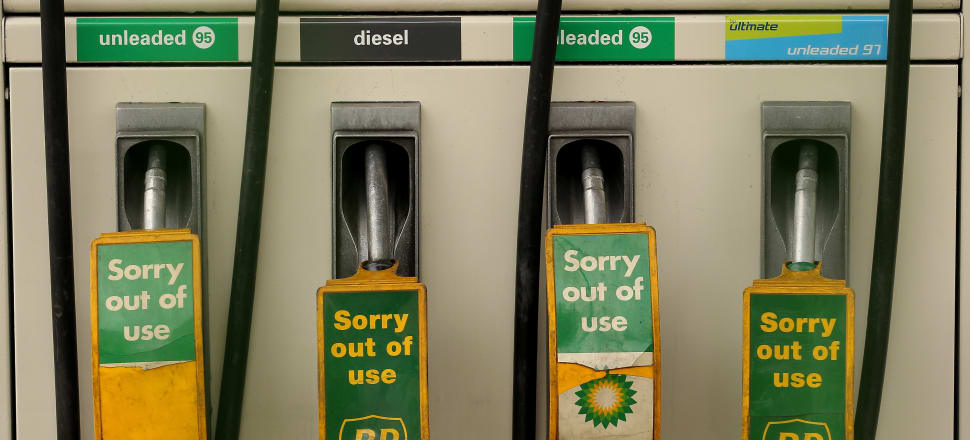
Russia is playing a geopolitical game in oil and gas – so New Zealand's answer must be a clean tech revolution. Incumbent companies and existing technologies need to play their part.
Opinion: With energy prices escalating sharply around the world, it’s crucial to identify the root cause – fossil fuel prices are rising. And the key solution – clean energy costs are falling.
Thus, it makes economic sense to switch from the former to the latter as quickly as possible. And even greater environmental sense. Burning fossil fuels generates two-thirds of global greenhouse gas emissions.
To help stabilise the climate, every country must transition to net zero emissions energy by 2050. It’s feasible in technology and economic terms, the OECD’s International Energy Agency said in its ground-breaking net zero report last May. But it warned there’s vast work to do.
For us New Zealanders, this year is particularly important for our energy future. Currently we have no energy transition strategy. The Government is promising one by the end of the year. Next week it will get a big assist when the Aotearoa Circle of business leaders publishes its Energy Roadmap to 2030. Next week’s column will examine it. This column is about the international context we’re working in.
Many players in the global fossil fuel sector blame energy inflation on what they claim is the high cost of clean energy. Thus their solution is more fossil fuels and less renewable energy.
Their diagnosis is dead wrong. Over the past decade, the costs of solar power and wind have fallen by 90 and 60 percent respectively. They are now the cheapest forms of electricity generation in 90 percent of the world, according to Bloomberg NEF, the clean energy arm of the global business news and analytics service.
Even better, these clean energy technologies will only get cheaper as their deployment increases, as a recent blog post by RMI, a US-based energy institute, discusses:
“…the technologies enjoy experience curves, whereby their costs fall by around 30 and 16 percent respectively for every doubling in deployment. Importantly, experience curves have been proven to persist through time. A group of academics at Oxford University have modelled likely future prices of solar on a probability distribution curve, and their central forecast is that they will reach around $10 per MWh by 2050. Moreover, they note that the faster we deploy renewables, the quicker the costs will fall.
“Meanwhile, fossil fuel prices exhibit no learning curve. After all, fossil fuels are a commodity not a technology. Their prices fluctuate over time and have recently set new highs because superior extraction technologies are having to fight against the continuous depletion and burning of the most accessible reserves. Because fossil fuels still dominate energy supply, suppliers are able to extract very high profits when demand bounces or when they are able to curtail supply.”
Indeed, oil majors such as BP and Shell are reporting bumper profits.
With these technology and economic factors in play – plus regulatory, legal and investment pressures – global investment in fossil fuels has fallen by 40 percent since 2015. This knocked out a lot of high-cost producers, such as many frackers in the US who had helped make it the world’s largest oil and gas producer.
Then during the pandemic, stocks of fossil fuels fell sharply in global supply chains. So, when the global economy began its sharp recovery last year, Opec Plus, the 23 oil-producing nations led by Saudi Arabia and Russia, exhibited more supply discipline than they had in recent years to push up crude oil prices.
Russia is also playing a geopolitical game in gas. As Fatih Birol, the head of the IEA, noted last month in a Linkedin article on the gas crisis in Europe:
“We see strong elements of ‘artificial tightness’ in European gas markets, which appears to be due to the behaviour of Russia’s state-controlled gas supplier. Unlike other pipeline suppliers – such as Algeria, Azerbaijan and Norway – Russia has reduced its exports to Europe by 25 percent in the fourth quarter of 2021 compared with the same period in 2020 – and by 22 percent compared with its 2019 levels. And this is despite the exceptionally high market prices for natural gas that we have seen in recent months. Against today’s low baseline, we estimate that Russia could increase deliveries to Europe by at least one-third, or over 3 billion cubic metres per month.”
About a quarter of Germany’s energy supply is gas, of which half is provided by Russia. In total, Russia supplies 40 percent of Europe’s gas imports. If President Putin was hoping that dependence would make Germans less ardent supporters of Ukraine, he received the opposite message this week. Germany suspended certification of Nord Stream 2, an US$11 billion pipeline built by Gazprom, a Russian state-backed company, to carry Western Siberian gas via Germany to eastern and southern Europe. Russia faces the greater economic risk. Oil and gas account for more than half its exports.
Of course, geopolitics will play an increasing role in the supply of some crucial minerals for the clean tech revolution. But once countries have built their renewable electricity generation and storage capacity they will gain a lot more energy security and resilience.
As Birol, noted in the above article: “We showed in our recent World Energy Outlook 2021 well managed clean energy transitions can help reduce energy market volatility and its impacts on businesses and consumers. The underlying causes of today’s crisis lie elsewhere.” To illustrate the positive impact of the transition on household energy budgets, he used this chart from the Outlook 2021 report:
The economic benefits flow widely across economies. For example, the IEA estimates a net zero global energy system would create a market for wind turbines, solar panels, lithium-ion batteries, electrolysers and fuel cells of well over US$1 trillion a year by 2050, comparable in size to the current oil market.
Investment in such a future has started to ramp up over recent years, as the latest Energy Transitions Investment report from Bloomberg NEF shows. The investment totalled US$755bn, led by the EU (US$219bn), China (US$266bn) and the US (US$114bn). There was additional US$68bn of equity investment in new clean energy technologies globally.
But to get on to a net zero track globally, Bloomberg says, this annual global investment needs to treble in the years 2022-25, then double to an average of US$4,189 billion a year in the years 2026-2030. The IEA models a similar scale of investment.
Attracting such large investment flows for such a deep transformation requires fundamental redesign of energy policies, regulations, investment and business models, and wholesale and retail markets the world over.
While mould-breakers, disruptors and innovators are vital for that, incumbent companies and existing technologies have crucial roles too. But only if they bravely help to make our future rather than obstinately defend their past.
This is the vastly positive but deeply disruptive global context in which we’ll be setting New Zealand’s energy future this year.









